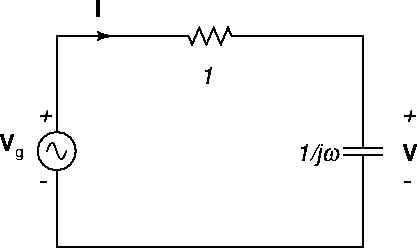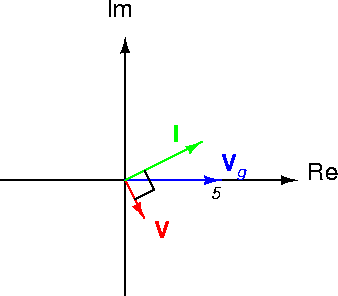




[ENGN2211 Home]
Let's analyse the steady state AC response of the
circuit of Figure 33 using phasors.
The phasor circuit is shown in Figure 37.
Here,
 V.
V.
Figure 37:
RC phasor circuit showing AC impedances.
 |
By KVL and Ohm's law, we have
and so
or
Then by Ohm's law,
or
 |
(47) |
in agreement with (46) and (45).
We obtain the real voltage by
 |
(48) |
in agreement with (42).
The phasor diagram for this problem is shown in
Figure 38.
Figure 38:
RC phasor diagram.
 |





[ENGN2211 Home]
ANU Engineering - ENGN2211
![]() V.
V.
